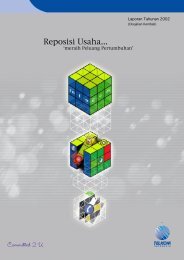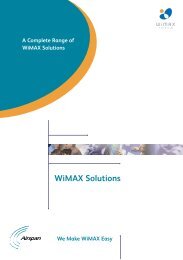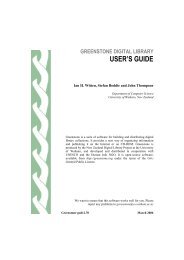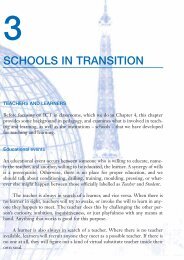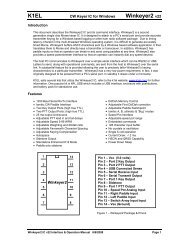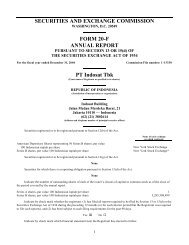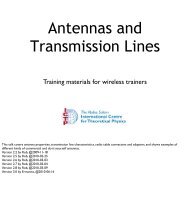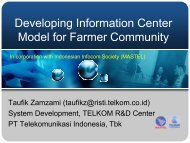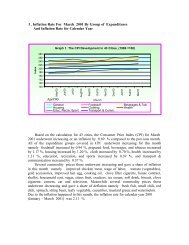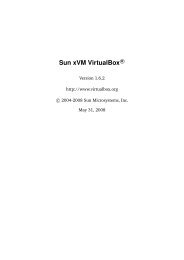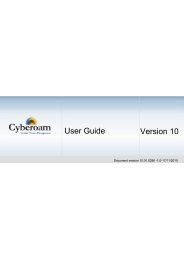CDS/ISIS Printing.. - Kambing UI
CDS/ISIS Printing.. - Kambing UI
CDS/ISIS Printing.. - Kambing UI
You also want an ePaper? Increase the reach of your titles
YUMPU automatically turns print PDFs into web optimized ePapers that Google loves.
online databases for information. It introduces the most important archives of personal records, and<br />
provides reference guide to several thousand databases.<br />
INTERNET / ONLINE SEARCHING / INFORMATION SOURCES / INFORMATION RETRIEVAL /<br />
G<strong>UI</strong>DES TO INFORMATION SOURCES / COMPUTER NETWORKS / ACCESS TO INFORMATION<br />
/ DATA BASES / SEARCH STRATEGIES<br />
Call no. : 025.04 L265N<br />
12345<br />
Li, Xia; Crane, Nancy B.<br />
Electronic styles: a handbook for citing electronic information. 2nd ed. Medford, N.J.:<br />
Information Today, Inc., 1996. 213 p.<br />
This handbook presents standard citation form already in wide use and adapt it to include the elements<br />
that are needed to describe electronic sources. By including citation formats in both APA and MLA<br />
styles, it shows how to cite full text information files, bibliographic databases, Internet accessible<br />
electronic journals and discussion lists, e-mail, bulletin board systems, and commercial online<br />
documents.<br />
BIBLIOGRAPHIES / BIBLIOGRAPHY COMPILATION / BIBLIOGRAPHIC STANDARDS /<br />
BIBLIOGRAPHIC DATABASES / BIBLIOGRAPHIC JOURNALS / ELECTRONIC SOURCES /<br />
INTERNET / TEXUAL DATABASES / INFORMATION SOURCES / ELECTRONIC MAIL<br />
Call no. : 025.302855 L693 1996<br />
15085<br />
McLellan, Hilary.<br />
The Internet as a virtual learning community. Journal of Computing in Higher Education. 1998. v.<br />
9(2): p. 92-112. English.<br />
The model of an Internet-based virtual learning community, with students interacting dynamically with<br />
the content, the technology, and, most importantly, each other, offers a powerful and convivial<br />
approach to providing education at a distance. The classes described here, based on over a year of<br />
teaching classes entirely via the Internet, work very effectively as collaborative communities.This<br />
paper describes one model for implementing university classes via the Internet using Listservs,<br />
electronic mail, and the World Wide Web (WWW). It reports on students feedback concerning this<br />
approach to learning. A comparison is made between Internet-based classes and traditional classes<br />
taught face-to-face. In addition, the complementary possibilities of asynchronous virtual learning<br />
experiences--where students participate in class activities flexibly, at any time of their own<br />
choosing--and synchronous on-line activities--where all class members are on-line at the same time in<br />
a class-wide interactive forum of discussion, questions and answers, brainstorming, and other<br />
activities-are examined.<br />
EDUCATIONAL TECHNOLOGY / COMPUTER NETWORKS / COMPUTER INTERFACES /<br />
COMPUTER ASSISTED INSTRUCTION / DISTANCE EDUCATION / HOME EDUCATION /<br />
ONLINE SYSTEMS<br />
USA / CANADA<br />
22244<br />
Open and distance learning : trends, policy and strategy considerations. Paris: UNESCO, 2002.<br />
94 p.<br />
DISTANCE EDUCATION / EDUCATIONAL TRENDS / EDUCATIONAL POLICY / EDUCATIONAL<br />
STRATEGIES / EDUCATIONAL SYSTEMS / EDUCATIONAL PLANNING / EDUCATIONAL<br />
INNOVATIONS / INTERNET IN EDUCATION / WORLD WIDE WEB / TEACHER EDUCATION /<br />
VOCATIONAL EDUCATION / LIFELONG EDUCATION / NONFORMAL EDUCATION / HIGHER<br />
EDUCATION<br />
AFRICA / ARAB STATES / ASIA AND THE PACIFIC / OCEANIA / EUROPE / LATIN AMERICA /<br />
45




